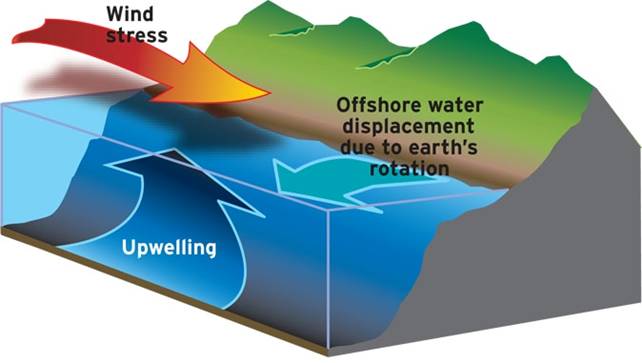Why is the Sea Cold?
The temperature of the water is integral for our sport! This is because to know the temperature is to know what to wear for your SUP session! Sometimes we even have to weigh up if the conditions are worth putting on all that neoprene! In this article we will look at what cause the temperature of the ocean to change so much.

In some places in the world the water changes dramatically from season to season, in other parts of the world there is hardly any variations. But contrary to popular belief the variation in temperatures isn’t not directly linked to latitude, so what and why do we have these fluctuations?
The Myths of Water Temperature
Logically, in Europe you would assume the more North you are the colder the water would be; however, this is not true. The Outer Hebrides, Scotland only sees a fluctuation of 5°C, whereas off the German Bite, around Denmark, the water temperature fluctuates by up to 15°C. In France, during the summer you could just about surf without a wetsuit, but go further south to Galicia, in Northwest Spain, you would need a 4/3 wetsuit.
So, what controls the water temperature?
There are 2 main factors that control the temperatures 1. Currents and 2. Upwelling

Ocean currents on world map
The first factor is the regulatory effect of ocean currents, in areas where there is a strong surface current flowing past the coast, the surface water is continually replenished by water from elsewhere giving it little time to warm up or cool down with the seasons. The water brought in by currents may originate from somewhere where the temperature is completely different, giving the coastal waters a totally uncharacteristic temperatures for their position. A perfect example is the Benguela current in Southern Africa, that brings water in from Antarctica, making the waters around South Africa a bit chillier than expected!

The second factor is upwelling. The phenomenon of coastal upwelling is particularly apparent in Southern Africa, and South America. These areas combined with the trade winds and Coriolis force drives water away from the land, only to be replaced with colder water from the depths. In the coastal waters in Namibia it is not uncommon to find water temperatures of 11°C with land temperatures as high as 40°C, exactly for this reason, plus a combination of the strong currents, that drives the water away preventing it for being warmed up.
Shallow Seas, High Temperature Fluctuations!
So we have touched briefly on the currents and forces found in the oceans (principally the Atlantic), but what about the seas? We can generally consider seas as more confined and shallow bodies of waters. For example, the North Sea, and The Baltic Sea these are very shallow bodies of waters. In these bodies of water there is relatively little circulation of water. They are out of the reach of the oceanic currents. In these bodies of water, the water column hardly ever moves, so it really does have time to heat up cool down with the seasons. In the Baltic Sea up in the Bothnian Sea and Gulf of Finland the water is so stagnant that the water creates a Thermocline, the water can be stratified into layers of temperature, just because there is very little water movement.

Credit: https://emodnet.ec.europa.eu/geoviewer/
Slow heating of the Sea!
If you are a regular in the sea, you will notice that sea temperature is completely out of phase for the season that you are in. This is because the sea takes a long time to heat up! There is in general a 3-month lag time between the seasons and the water temperature. Peak temperature in Europe is normally around September and the lowest temperature is around March. It is in March that you will need your hoods, and gloves. Why is this, this is because the ocean requires an enormous amount of energy to even raise the temperature a few degrees. Then when the heat input is reduced, the ocean takes a few months to cool down.
Why does the ocean not freeze?
The sea contains salt, and the high concentration of salt lowers the freezing point from 0° C to -2°C. Couple this with the fact the ocean is a large body of water, so it would need to have a constant temperature of below freezing to freeze over. This is why places like the Eastern and Northern reaches of the Baltic Sea are (or can be) frozen in winter, but not the entrance to the sea.
So now we know that latitude has no bearing on water temperature, it is a product of other forces and systems at work. With this in mind you will be able to think about what exactly you need to wear when going on the water.
Helen Trehoret is an oceanographer and geographer, based out of France. Helen leads SUP holidays in France, and in Scotland. Helen is the lead instructor for the Wild Women SUP Symposium, where she teaches the theory of SUP Expeditions, and Planning, using her knowledge from her career as an oceanorgrapher and kayak/ SUP instructore.
